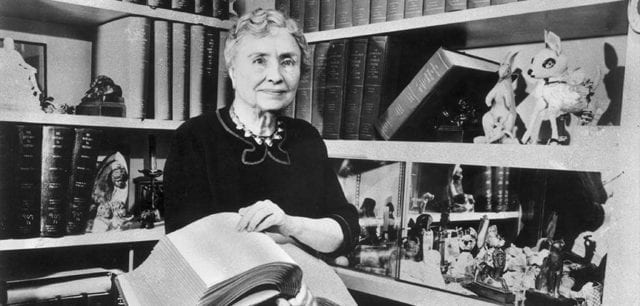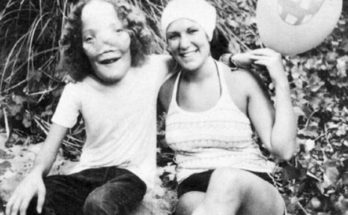Quick Facts
| Net Worth | Not Known |
| Salary | Not Known |
| Height | Not Known |
| Date of Birth | Not Known |
| Profession | Celebrities |
The story of Helen Keller is powerful enough to inspire anyone with any form of physical disability not to give up on themselves and their dreams. Keller is famous for being the first deaf and blind person to earn a bachelor’s degree. Struck deaf and blind by a brain fever when she was barely two years old, Keller went on to defy the odds to become an internationally recognized icon, especially in education.
She was a prolific author, political activist, and lecturer. Over half a century has flown by since Hellen passed, however, her legacy lives on and continues to draw attention from time to time.
Who Is Helen Keller?
On the 27th day of June 1880 in a homestead in Ivy Green in Tuscumbia, Alabama a couple named Arthur H. Keller and Katherine Adams Keller welcomed their first daughter Helen Adams Keller into the world. She was born as a completely healthy child with all of her sense organs intact. Keller was raised alongside her two siblings Mildred Campbell and Phillip Brooks Keller. From her father’s previous marriage, Helen was the half-sister to James and William Simpson Keller.
The Keller family were not particularly wealthy, neither were they poor, the patriarch Arthur Keller was an officer in the Confederate Army during the Civil War and after the war ended, he took up a job as an editor of the weekly local newspaper, the North Alabamian. The family’s primary source of livelihood was their cotton plantation.
Hellen Keller developed pretty fast, starting to speak when she was just 6 months old and walking by the age of one. Unfortunately, her life took a tragic trajectory in 1882 when at just 19 months old, Hellen was struck by a fever that left her blind and deaf. The illness causes which still remains a mystery was diagnosed by the family doctor as “brain fever”. Keller’s body temperature reached alarming degrees and physicians would later suspect it to be scarlet fever or meningitis.
Her parents noticed the effect of the illness when Keller no longer responded to dinner bells and not flinch when a finger was waved across her face. The illness left young Keller traumatized and she would often express her emotions in an extreme manner, throwing raging tantrums at her parents and giggling uncontrollably when excited.
She was very close to a certain Martha Washington the young daughter of the family cook. Together with Martha, Keller developed speaking signs and by the age of 6, she had developed about 60 signs to communicate with her family. Keller’s parents became so troubled by her illness that they desperately sought for answers and a better life for their daughter.
They were recommended to Alexander Graham Bell, the founder of the telephone who at the time (1886) was working with deaf and blind people. Bell sent them to Perkins Institute for the Blind in Boston, Massachusetts where Anne Sullivan was assigned to assist with Keller.
Anne Sulivan would come to play a hugely pivotal role in Hellen Keller’s life, enduring through her early tantrums from frustration and helping her develop to unprecedented levels. Anne Sullivan spent the rest of her life fully dedicated to Keller’s education.
Facts About Her Education and Teaching
• A year into her home tutorials with Anne Sullivan, Helen Keller began her formal education in 1888 at the Perkins Institute for the Blind where she learned to read the Braille. She also attended the Wright-Humason School for the Deaf and the Horace Mann School for the Deaf where she took speech classes.
• Helen Keller briefly attended The Cambridge School for Young Ladies before her learning abilities inspired an admirer Mark Twain to sponsor her to attend Radcliffe College of Harvard University from where she graduated in 1904 at the age of 24 becoming the first blind person to earn a college degree. Anne Sullivan sat by her side all through her college classes, helping her to interpret lectures.
• In college, Helen Keller became proficient in several communication methods, including Braille, typing and finger spelling, and touch-lip reading.
• With the help of her companion Anne Sulivan’s husband, John Macy, Helen Keller wrote her first book, an autobiography titled The Story of My Life which detailed her life from childhood until the age of 21. She would come to write a total of 12 books.
• After earning her college degree, Keller began giving lectures often sharing her experience with her disability which served as a huge inspiration to many. She would visit many deaf schools and soon became a social activist for people with disabilities. At one time she testified before Congress advocating for the welfare of blind people.
Later Life and Death
Helen Keller dedicated her entire life striving to improve the life of disabled people. Her works gained her international prominence and as a result, she was vastly awarded for her achievements. In 1964, President Lyndon B. Johnson honored her with the Presidential Medal of Freedom.
Her endeavors took her to over 35 countries. She has streets in France, Spain, and Israel named after her. Keller suffered a series of stroke in 1961 and on June 1, 1968, Helen Keller passed away peacefully in her sleep. Keller has received many Posthumous honors. In 1971 and 2015 respectively, she was inducted to the Alabama Women’s Hall of Fame and the Alabama Writers Hall of Fame.
Top 3 Richest Celebrities
Also Read: Top 10 Richest People in the world with full biography and details.




